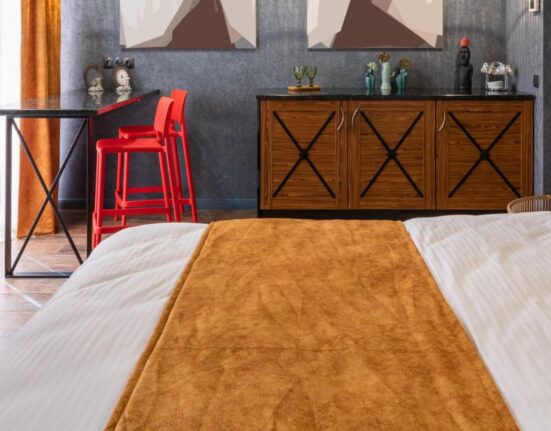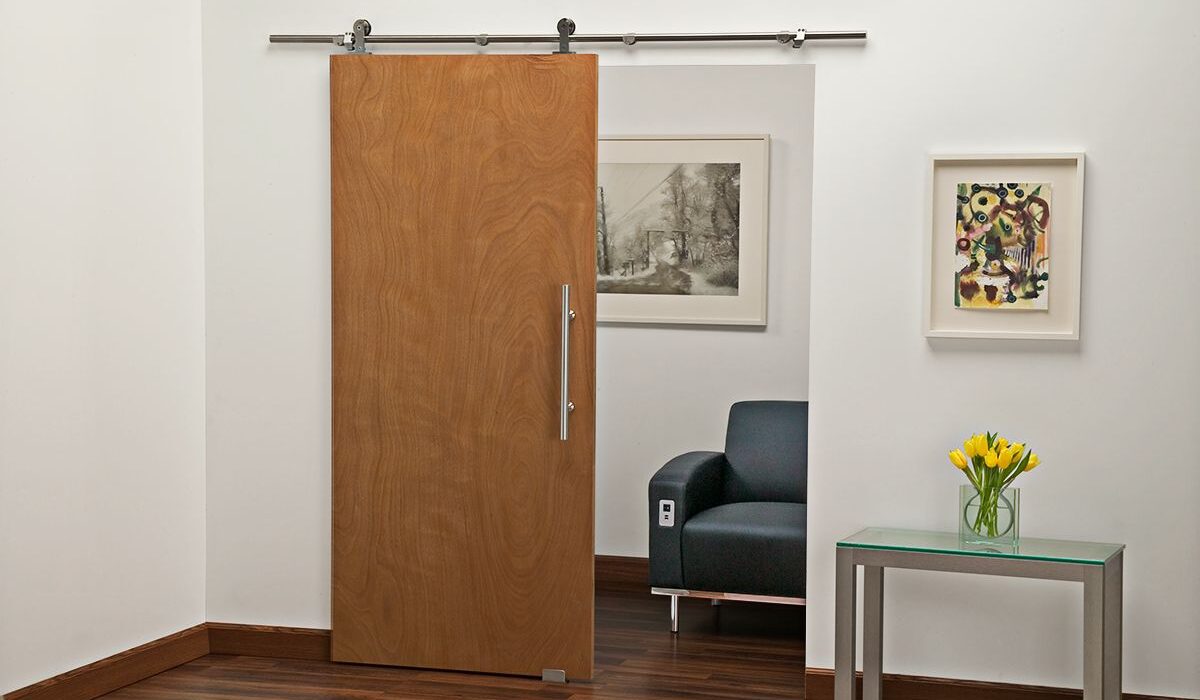Sliding Door Hardware are popular in modern homes, businesses, and even outdoor spaces. They save space, allow effortless movement, and add an elegant touch to any area. But what makes these doors work so smoothly? The answer lies in the “sliding door hardware.” In this guide, we’ll dive deep into everything you need to know about sliding door hardware, from the different types available to the installation process, maintenance tips, and more.
Whether you’re considering adding a sliding door to your space or replacing old hardware, this article provides all the information you need.
What is Sliding Door Hardware?
“Sliding door hardware” refers to the various components that make a sliding door function. Unlike traditional swinging doors that rely on hinges, sliding doors operate on a set of tracks and rollers. The hardware enables the door to slide horizontally rather than opening outwards or inwards, saving space and allowing for smooth, effortless movement.
Critical components of sliding door hardware include:
- Tracks: The rail on which the door slides.
- Rollers or Wheels: These allow the door to glide along the track.
- Handles and Locks: Essential for easy operation and security.
- Guides and Stoppers: To keep the door aligned and prevent it from going off track.
Each component is crucial in the door’s operation, durability, and overall look.
Benefits of Using Sliding Door Hardware
Sliding door hardware is not just about functionality; it adds style, efficiency, and convenience to a space. Here are some of the key benefits:
- Space-Saving: Sliding doors eliminate the need for door clearance, making them ideal for small rooms, closets, and areas with limited space.
- Enhanced Aesthetic Appeal: Sliding door hardware comes in a variety of finishes and designs, and it can add a modern, rustic, or industrial touch to any room.
- Smooth Operation: Quality hardware ensures the door slides effortlessly, reducing wear and tear.
- Versatility: Sliding door hardware can be used for interior doors, closets, room dividers, and outdoor patios.
- Easy Maintenance: With minimal parts, sliding doors are often easier to clean and maintain than traditional doors.
Types of Sliding Door Hardware
Several types of sliding door hardware are suited for different styles and purposes. Let’s explore some of the most popular types:
1. Barn Door Hardware
Barn doors have become a popular trend in interior design, adding a rustic charm to any space. Barn door hardware is visible, typically sliding on a flat rail attached to the wall. This type of hardware is perfect for farmhouses or industrial-style homes.
2. Pocket Door Hardware
Pocket door hardware is ideal for tight spaces. With pocket doors, the door slides into a wall cavity, disappearing entirely when open. This type of sliding door hardware is excellent for bathrooms, closets, or any room where saving space is essential.
3. Bypass Door Hardware
Bypass doors are commonly used in closets and storage spaces. With bypass door hardware, two or more doors slide past each other on parallel tracks. This allows easy access without requiring much space in front of the doors.
4. Bi-Fold Door Hardware
Although not a traditional sliding door, bi-fold doors work similarly by folding in on themselves. They are often used for closets or pantries. Bi-fold door hardware usually includes hinges and a track system that allows the door panels to slide and fold as they open.
5. Sliding Glass Door Hardware
Sliding glass doors are often used for patios and balconies. They require specific hardware that can handle the weight of glass panels. Sliding glass door hardware typically includes heavy-duty rollers and weatherproof tracks to withstand outdoor conditions.
6. Soft-Close Hardware
Soft-close sliding door hardware is designed for those who prefer quiet, gentle operation. This hardware includes a mechanism that catches the door as it closes, slowing it down for a soft, noise-free finish. Soft-close hardware is ideal for bedrooms and offices where a quiet environment is essential.
Critical Components of Sliding Door Hardware
For a sliding door to work correctly, it relies on several key components. Here’s a closer look at what each part does:
| Component | Description |
|---|---|
| Track | The rail that guides the door’s movement. Tracks can be ceiling-mounted or floor-mounted. |
| Rollers | Wheels that sit on the track and allow the door to slide smoothly. |
| Guide | Keeps the door in place and prevents it from wobbling or swinging. |
| Handle | It keeps the door in place and prevents it from wobbling or swinging. |
| Stopper | It provides a grip for opening and closing the door. Available in various styles to match décor. |
| Soft-Close Mechanism | Slows down the door’s closing motion, preventing slamming and reducing noise. |
Each component must be high-quality to ensure the door operates smoothly, lasts longer, and maintains its appearance.
Choosing the Right Sliding Door Hardware for Your Needs
Selecting the right sliding door hardware depends on several factors. Here’s what to consider:
- Door Material and Weight: Heavier doors, such as those made of glass, require stronger,, more robust,, especially durable tracks and roll, rs.
- Purpose of the Door: Think about where the door will be used. For example, soft-close hardware is excellent for bedrooms, while heavy-duty weatherproof hardware is best for patio doors.
- Aesthetic Style: The hardware should match the room’s decor. Barn door hardware works well in rustic or industrial spaces, while sleek handles and hidden tracks suit modern interiors.
- Ease of Installation: Some types of hardware, like barn doors, are easy to install DIY-style, while others, like pocket doors, may require professional installation.
Installation Tips for Sliding Door Hardware
Installing sliding door hardware can be a rewarding DIY project if you have the right tools and follow some basic guidelines. Here are some essential installation tips:
- Measure Carefully: Accurate measurements are critical. Measure the width and height of your door and the space where it will slide.
- Level the Track: Use a level to ensure the track is perfectly horizontal. An uneven track will cause the door to slide poorly.
- Attach the Rollers Securely: Securely fasten the rollers to the door. Loose rollers can make the door wobble or derail.
- Install Guides and Stoppers: Guides and stoppers prevent the door from swinging out of alignment or sliding too far. Make sure they’re correctly positioned.
- Test the Door: Slide the door back and forth to ensure smooth operation. Adjust if necessary.
Note: Professional installation may be required for more complex systems like pocket doors to ensure safe and precise fitting.
Maintenance Tips for Sliding Door Hardware
Keeping your sliding door hardware in top shape requires little effort, but regular maintenance can go a long way. Here’s what you need to do:
- Clean the Track Regularly: Dust and debris can build up in the track, causing friction. Use a vacuum or brush to keep it clean.
- Lubricate Rollers and Tracks: To maintain smooth movement, apply a silicone-based lubricant to the rollers and tracks every few months.
- Check for Loose Screws: Over time, screws may become loose. Inspect and tighten them as needed.
- Replace Worn Out Parts: Heavy use may wear out rollers, guides, and other components. Replace these parts to ensure the door continues to operate smoothly.
By following these simple maintenance tips, you can extend the life of your sliding door hardware and keep it functioning like new.
Common Issues with Sliding Door Hardware and How to Fix Them
Even with high-quality hardware, you may encounter some common issues. Here are a few problems and quick fixes:
- Sticking Door: Often caused by dirt in the track. Clean the track and apply lubricant.
- Noisy Operation: This can be due to dry or damaged rollers. Lubricate the rollers or replace them if they’re worn.
- Misaligned Door: If the door tilts or wobbles, check the guide and ensure the track is level.
- Hard to Slide: This might be caused by a bent track or damaged rollers. Inspect both and replace any damaged parts.
These simple troubleshooting steps can resolve the most common issues with sliding door hardware.
Why Quality Matters in Sliding Door Hardware
Investing in quality sliding door hardware is essential. High-quality components ensure smooth operation, durability, and a polished look. Cheap hardware may work initially but quickly wears out, leading to frequent repairs and replacements. On the other hand, quality hardware is built to last, reducing long-term costs and enhancing the overall user experience.
Final Thoughts on Sliding Door Hardware
Sliding door hardware is the backbone of any sliding door system, providing functionality and style. From barn doors to pocket doors and bypass systems, a wide variety of options are available to suit any space and design preference. Whether installing a new door or replacing old hardware, understanding the different types, key components, and maintenance requirements will help you make an informed choice.
By choosing high-quality sliding door hardware, you’re investing in a solution that offers convenience, enhances your decor, and stands the test of time. S,otheidesignestylee, and function with the proper sliding door hardware!








